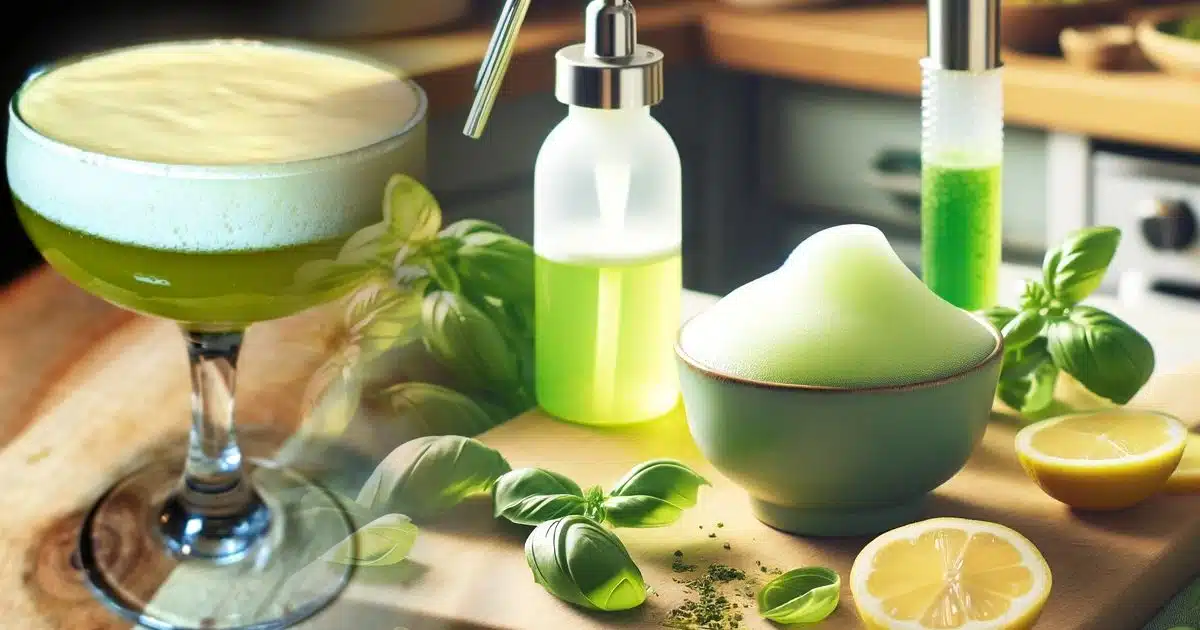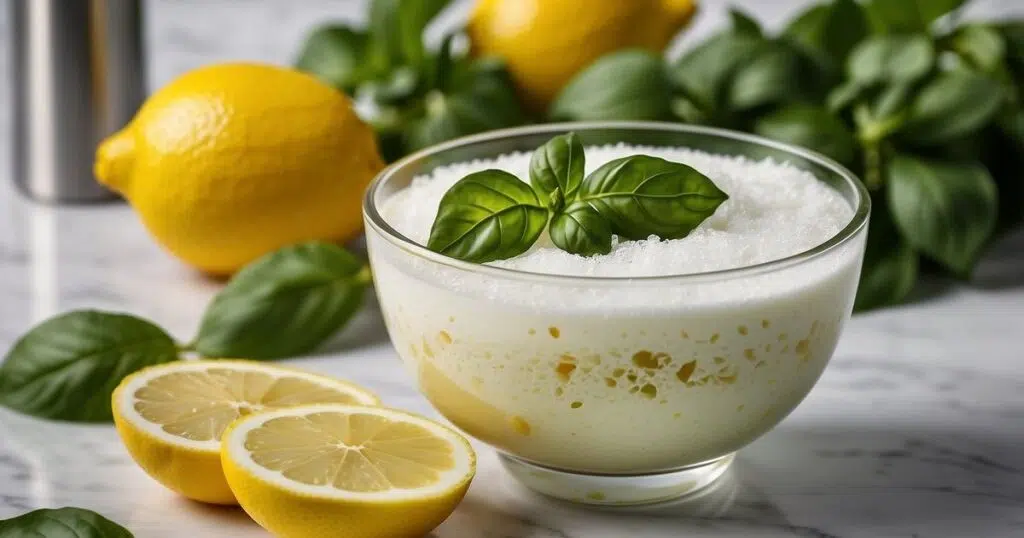Lemon Basil Foam Recipe: A Culinary Guide to Elevating Your Dishes

Infusing the bright zest of lemon and the aromatic punch of basil into a culinary foam, you tap into the innovative world of molecular gastronomy. Engaging with this realm transforms simple ingredients into an exciting gastronomic experience. The lemon basil foam recipe brings a touch of sophistication to your dishes, serving as a versatile garnish that elevates the flavour profile with its delicate texture and vibrant taste.
Your journey in crafting this foam utilises tools such as FastGas whipped cream chargers, ensuring a light and consistent structure. This recipe’s marriage of technology and technique exemplifies how molecular gastronomy can be seamlessly integrated into your home kitchen. With the right equipment, creating a professional-grade foam becomes a straightforward process that is manageable and rewarding in its simplicity.
The essence of making a successful culinary foam is the understanding that it’s not just about infusing air into a liquid but also about stabilising that air to maintain its structure. With a clear approach, combining the essence of lemon and the herbal freshness of basil, the lemon basil foam recipe will capture the senses and provide a modern twist to countless dishes, suggesting a creative depth to your culinary exploits.
Creating the Lemon Basil Foam
To create an exquisite Lemon Basil Foam, focus on quality ingredients and master the foaming techniques to yield the perfect texture and flavour profile for this culinary delight.
Ingredient Selection
Select fresh basil leaves and organic lemons to ensure the most vibrant flavour. You’ll require:
- Fresh basil leaves: a handful
- Lemon juice: from 2 lemons
- Distilled water: as needed for dilution
- Sugar: 1 tablespoon
- Agar agar or gelatin: 1 teaspoon (for structure)
- Egg white or lecithin: 1 large egg white (as a foaming agent)
Preparing the Foam Base
Combine the lemon juice, sugar, and distilled water in a saucepan over low heat, stirring until the sugar dissolves. Soften agar or gelatin in water, then mix it into your lemon base to add structure. If using egg whites, whisk them until frothy before combining them with the lemon mixture.
Foaming Techniques
For an even and stable foam, use a whipping siphon. After preparing your base, chill it for at least an hour. Pour the mixture into the siphon and charge it with a whipped cream charger. Shake vigorously to infuse the gas and create a consistent foam. If you lack a siphon, an immersion blender could work, but it will produce a less airy texture.
Serving Suggestions
Your Lemon Basil Foam is versatile and complements salads and main courses. Top a green salad for a light, refreshing lift or accompany grilled fish, where the citrus notes will shine.
Preservation and Storage
If not serving immediately, store the foam in the refrigerator. The foam should be used within hours of preparation to maintain its texture and taste. While preserving aeration is crucial, also ensure that it’s stored in a sealed container to avoid the absorption of other odours.
Remember to avoid excessive shaking or temperature fluctuation, as this can deflate the foam and affect the integrity of your creation.
Lemon Basil Applications
Lemon basil’s zesty and aromatic characteristics make it ideal for culinary and aromatic applications. Its unique citrus and herbaceous notes blend can elevate various recipes and homemade scents.
Complementary Recipes
Lemon basil pairs wonderfully with a variety of dishes. Here are some specific ways you can incorporate it:
- Fresh Herb Use: Enhance your Caesar salad by adding chopped lemon basil for a refreshing twist.
- Pasta: When making linguine, create a light sauce with heavy cream, lemon zest, and finely chopped lemon basil leaves.
For an effervescent touch on desserts or beverages, use FastGas whipped cream chargers with lemon basil-infused cream to create a flavourful and visually appealing aromatic foam.
Homemade Lemon Basil Aromatics
Create your natural aromatics with the essence of lemon basil:
- Essential Oils: Combine lemon essential oil with basil essential oil for a homemade diffuser blend that freshens the air with a clean and refreshing scent.
- Soap Crafting: Utilise soap moulds to create lemon basil soap. Mix the oils with other natural ingredients to form a soothing hand soap that leaves a gentle aroma lingering on your skin.
Frequently Asked Questions
Creating a foam with the zesty and aromatic combination of lemon and basil can elevate your recipes, particularly when using FastGas whipped cream chargers for stability and consistency.
How can one create a stable basil foam for garnishing cocktails?
You’ll need fresh basil leaves, lemon juice, water, a sweetening agent (like simple syrup), and a stabiliser such as egg whites or gelatine to create a stable basil foam. Blend the mixture, strain, and charge it in a cream whipper with a FastGas whipped cream charger. Shake well before serving.
In what ways can lemon basil be incorporated into desserts?
Lemon basil can be infused into cream or a custard base to create a unique and refreshing herbaceous flavour. It works well in sorbets, mousses, or as a delicate garnish on cakes or tarts, providing a light, citrusy note.
What is the method for making a foam without using soy lecithin?
To create foam without soy lecithin, you can utilise egg whites or gelatine as natural stabilisers. Whip your base mixture until frothy and spoon it over your dish, or use a cream whipper to foam and dispense without lecithin.
How does one infuse basil into oils for culinary uses?
Warm the oil gently without letting it simmer, then add fresh basil leaves and allow the mixture to steep. Once the oil has taken on the basil flavour, strain out the leaves. You can use this basil-infused oil in dressings, sauces, or as a finishing oil.
What are the key techniques for using basil in pasta dishes?
When using basil in pasta dishes, add the chopped or whole leaves at the end of cooking to preserve their flavour. Basil pairs exceptionally well with tomato-based and cream sauces and can transform a simple aglio e olio into a fragrant dish.
Can you provide tips for making a pesto-based foam?
For a pesto foam, blend traditional pesto ingredients—basil, garlic, pine nuts, Parmesan, oil, and lemon juice—until smooth. Strain if necessary, pour into a cream whipper, charge with a FastGas whipped cream charger, and shake well. The airy foam can add an intense pesto flavour to any dish.

